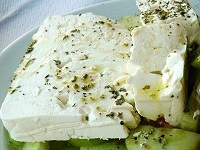Orvieto (Italy)
Orvieto is a blend of Grechetto and Trebbiano.
It is named after the city Orvieto in Umbria.
Orvieto Flavors
Citrus, Green Apple, Pear, and Peach are typical flavors for Orvieto. With hints of Basil, Bitter Almond, and Salty Minerals.
Lime |
Grapefruit |
Apple |
Pear |
Peach |
Basil |
Bitter Almond |
Seashell |
Orvieto Profile
Orvieto is dry, crisp, and moderately acidic:
| SUGAR: | Dry (3 g/l) |
| BODY: | Light |
| FRUIT: | Low |
| ACIDITY: | Medium Plus |
| ALCOHOL: | 11.5-13.5% ABV |
| Serving temperature: 8-10°C (46-50°F) | |
Orvieto Food Pairing
Orvieto is best known as an Aperitif, or as a starter wine for a delicate first course.
Aperitif |
Pasta |
Balsamico |
Antipasti |
Seafood |
Chicken |
Pork |
Ham |
Excellent Pairings
Antipasti.
Pasta with Pesto.
Lightly Smoked Meat. Ham.
Onion. Garlic. White Pizza.
Seafood Pasta with Lemon.
Pork or Veal with Citric or Acidic Sauces.
Vegetables with Citric or Acidic Sauces.
Italian Specialities
Pici Cacio e Pepe (Pasta with Pecorino Cheese and Black Pepper).
Fried Chicken in Lemon Sauce.
French Specialities
Escabèche (Sardines in Vinegar).
The Ideal Glass for Orvieto
A Tulip Shaped Glass with a slightly smaller bowl can be suitable for various dry white wines.

|
The glass guides the wine to the center of your mouth, avoiding the sides where acidity is less pleasant.
A smaller bowl also helps to serve smaller quantities, and keep the wine cold. It also helps if you hold the glass by the stem! |
Orvieto Cheese Pairing
Opt for cheeses with moderate saltiness and creaminess to balance the wine's acidity. You can also add accompaniments like fresh fruits (grapes, apples, pears), nuts (almonds, walnuts), or a light drizzle of honey to enhance the pairing.
Fresh and Mild Cheeses
Mozzarella: Its delicate flavor pairs well with the wine's lightness.
Ricotta: Especially good if served with a drizzle of honey or fresh fruits.
Goat Cheese (Feta): The tanginess complements the subtle fruit notes in Orvieto.
Soft Cheeses
Fontina: Its nutty, buttery qualities make a good match.
Brie: The creamy texture and mild flavor work beautifully with Orvieto.
Primo Sale: Similar to Brie but more flowerly, herby, and salty.
Semi-Soft Cheeses
Asiago: Lightly aged Asiago adds a complementary tang to the wine.
Gruyère: Mildly nutty and sweet, enhancing the wine's subtlety.
Blue Cheeses (for contrast)
Robiola: Its mild creaminess contrasts nicely without overpowering the wine.
If You Like Orvieto
You May Also Like:
About Orvieto
Orvieto is a blend of Grechetto (Minimum 40%) and Trebbiano (20-40%) and up to 40% of local grapes (Malvasia, Drupeggio, Verdello, Canaiolo Bianco).
Grechetto brings the fruitiness and the weight to the wine. The most highly rated examples of Orvieto have a high concentration of Grechetto.
Region Umbria

Climate
Umbria is characterized by rolling hills, valleys, and vineyard-covered landscapes. The region has a continental climate with hot summers and cold winters.
The diverse topography and varied elevations contribute to different microclimates well suitable for grape cultivation.
Soil
The soils vary from clay and sand in the valleys to limestone and marl in the hills.
Black Grapes |
White Grapes |

22% Sangiovese |

|
Red Wines |
White Wines |

|

|


DOCG Wines
Sagrantino Di Montefalco
Torgiano Rosso Riserva
DOC Wines
Amelia DOC
Assisi DOC
Colli Altodiberini DOC
Colli Del Trasimeno DOC
Colli Martani DOC
Colli Perugini DOC
Corbara Lake DOC
Montefalco DOC
Orvieto DOC
Rosso Orvietano DOC
Spolete DOC
Todi DOC
Torgiano DOC
Trebbiano Spolentino DOC
Alcohol can be addictive. Always drink in moderation.
© Copyright 2015-2025 W3 Wine School. All Rights Reserved.







